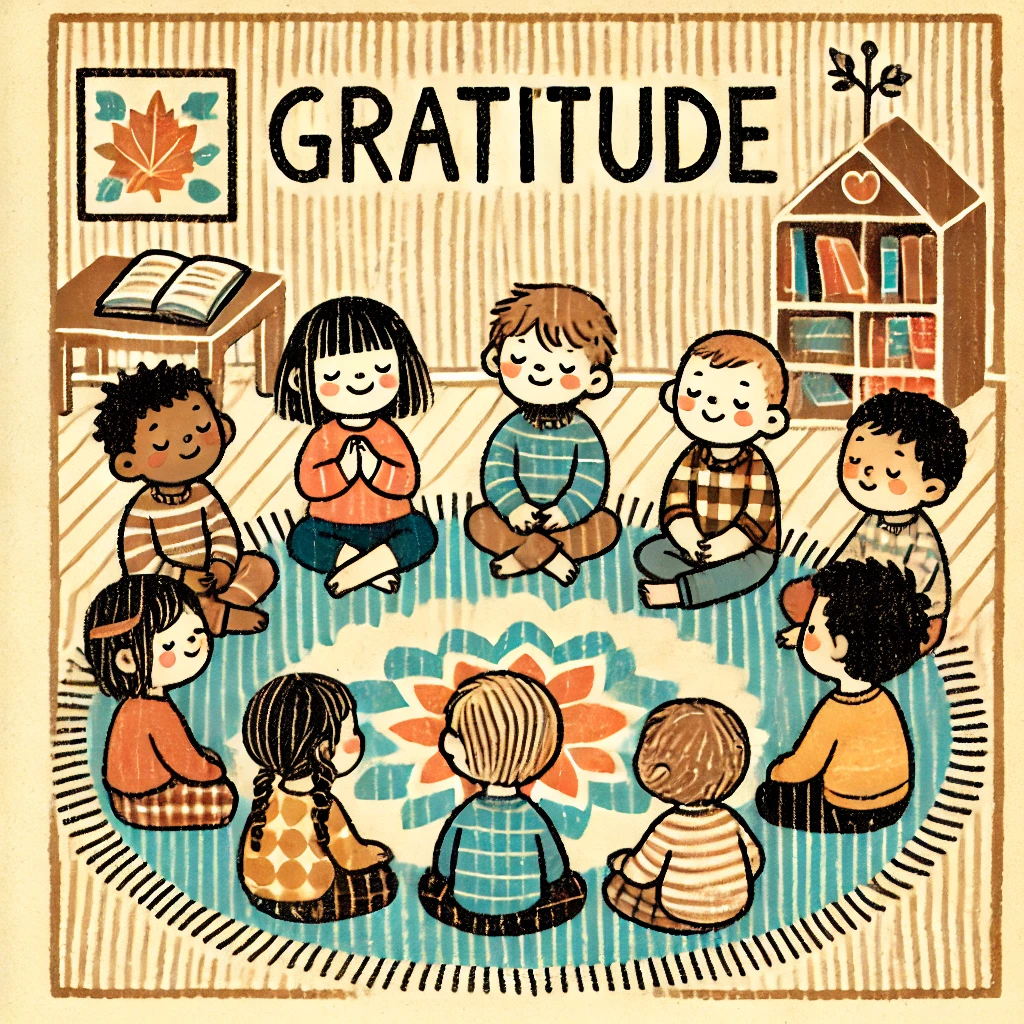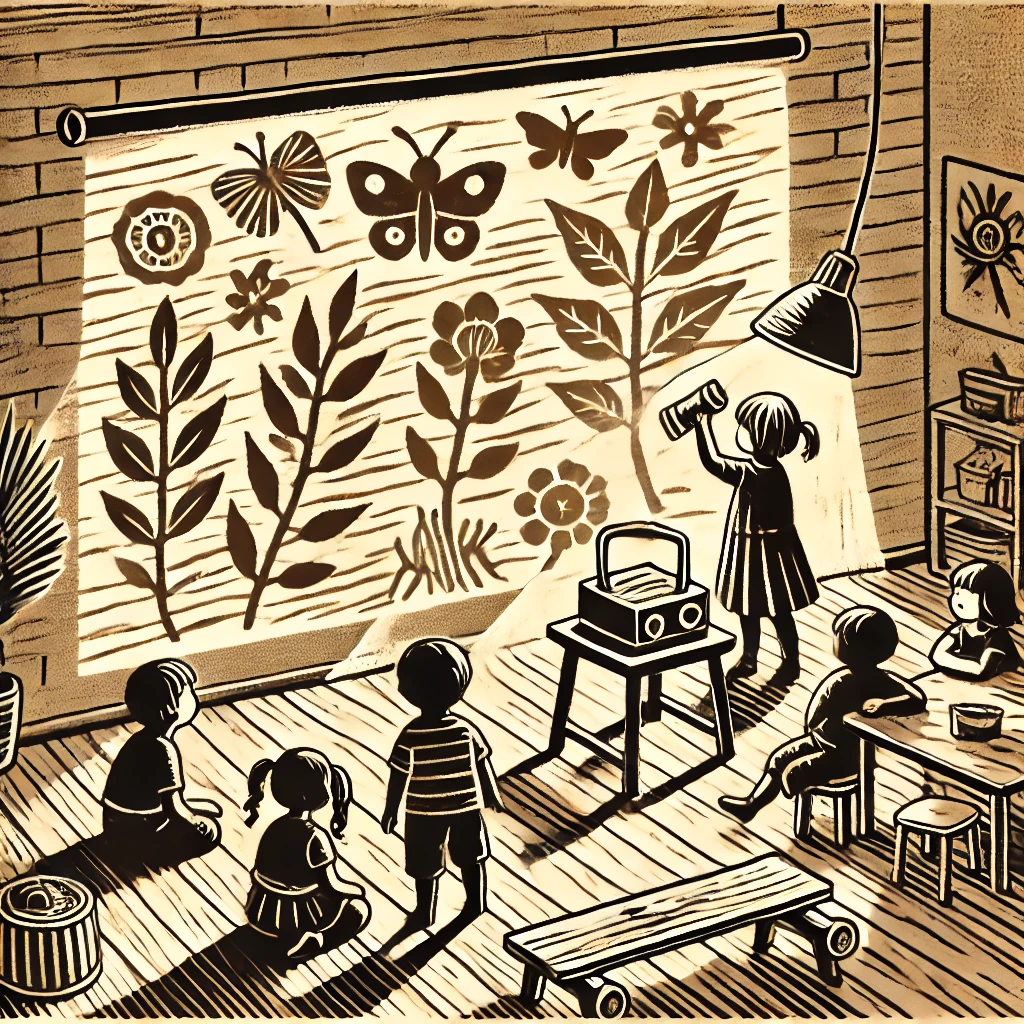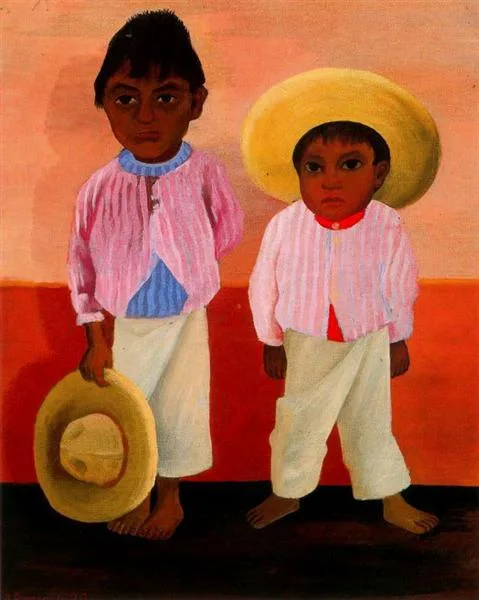Reggio Emilia Gratitude Activities: Thanksgiving Crafts & Be Thankful Ideas for Kids
Thanksgiving and the fall season are perfect opportunities to instill values like gratitude in young children. Incorporating Reggio Emilia gratitude activities into your preschool or early childhood classroom can help nurture thankfulness in a creative, child-led way.
The Reggio Emilia approach, known for its focus on child-led learning, creative exploration, and natural materials, provides an effective framework for be thankful activities for kids and Reggio Emilia Thanksgiving activities that inspire gratitude and mindfulness. This blog post will guide you through various Reggio Emilia-inspired gratitude activities, ideal for preschoolers or young students in a Reggio Emilia environment.


1. Gratitude Tree: A Collaborative Art Project
Create a Gratitude Tree with children as a collaborative project.
Start with a large paper or cardboard trunk and encourage children to add “leaves” by drawing or cutting out leaf shapes and writing (or dictating) something they are thankful for. This activity allows children to visually understand the collective gratitude of the classroom, fostering a sense of community and appreciation.
Why It Works: In true Reggio Emilia fashion, the focus is on collaboration and self-expression. Children use art materials to express personal thoughts, creating a shared experience in the classroom.
2. Nature Walk and Gratitude Collages
Take a nature walk and collect autumn treasures like leaves, acorns, and pinecones. Once back in the classroom, encourage children to make gratitude collages with their findings. This nature-inspired art activity helps connect children to their environment while reflecting on the beauty around them.
Reggio Emilia Element: Connecting with nature is key in Reggio Emilia pedagogy, as it helps children build a deeper connection with their surroundings and appreciate the natural world.
3. Gratitude Story Circle
Gather the children in a circle for a Gratitude Storytime. Each child is given a turn to share something they are thankful for. This can also be linked to a picture book that explores themes of thankfulness and gratitude.
Recommended Books: Consider reading books like “Thank You, Omu!“ by Oge Mora or “The Thank You Book” by Mo Willems to spark discussion.
Why It Works: The Reggio Emilia approach places a strong emphasis on children’s voices and listening to each other. Sharing personal gratitude helps build empathy and community.
Read also: The Best Thanksgiving Picture Books for Kids
4. “Thankful for My Friends” Collaborative Drawing
Children can draw pictures of their friends in the classroom and discuss why they are thankful for them. These drawings can then be displayed on a “Thankful Friends” board. This is an open-ended activity, giving children full freedom to express their ideas.
Why It Works: Relationships and collaboration are central to the Reggio Emilia philosophy. Children are encouraged to think about their social environment and appreciate their peers.
- How to Create a Fun and Engaging Self-Portrait Art Activity for Kids
- 10 Easy and Quick Ice Breaker Activities for a Memorable First Day of School
5. Gratitude Stones
Let each child find a smooth stone, either from the outdoor area or supplied by the teacher. Ask them to decorate the stone using paints or markers, adding words or symbols that represent something they are thankful for. These “gratitude stones” can be taken home or kept in a “Gratitude Garden” corner in the classroom.
Reggio Emilia Element: This hands-on, tactile experience connects children to their feelings through physical objects, a classic element of Reggio Emilia’s focus on using “loose parts” for self-expression.
6. Gratitude Recipes
For a twist on traditional Thanksgiving activities, children can work together to create a gratitude-themed dish inspired by the idea of Cooking with Gratitude. Each child can bring an ingredient that represents something they are thankful for, and together they create a “Thankful Feast.” This can be done as a pretend-play activity, or simply by discussing the importance of each ingredient and why they chose it. To complement this activity, consider reading “Apple Cake“ by Dawn Casey, a beautiful story that celebrates gratitude and sharing.
Reggio Emilia Element: Cooking together emphasizes community, cooperation, and sensory exploration, key elements in Reggio Emilia-based classrooms.
7. “Thankfulness Through Light” Shadow Play
Using an overhead projector or light table, children can create shadow displays that represent things they are thankful for. Children can use materials like cut-out paper, leaves, twigs, and other elements, casting shadows on a screen or wall and exploring their shapes.
Reggio Emilia Element: Light exploration is a hallmark of Reggio Emilia practice. Shadow play encourages creativity, exploration, and storytelling, while focusing on gratitude themes.
Read also: 21 Best Fall Picture Books for Kids


8. Thankfulness Paper Chain
Create a Thankfulness Paper Chain where each child writes or draws something they are grateful for on a strip of paper. Link all the strips together to form a chain, which can be hung around the classroom. This visual representation of gratitude helps children see how individual contributions create something beautiful and unified.
Why It Works: This activity is simple, engaging, and visually impactful. It encourages children to reflect on their gratitude while contributing to a collective project.
9. Gratitude Collage/Vision Board
Provide children with magazines, cut-out paper, and other art supplies to create a Gratitude Collage or Vision Board. They can cut out pictures or draw things they are thankful for and assemble them into a collage. This allows children to express their gratitude creatively and visually.
Why It Works: Vision boards and collages are open-ended activities that encourage children to use their imagination. This aligns with the Reggio Emilia approach by supporting individual expression and creativity.
10. Donation Bin
Set up a Donation Bin in the classroom and encourage children to bring items they no longer use or need. Discuss the importance of giving to others and how helping others can make us feel thankful. This activity promotes empathy and social responsibility.
Why It Works: The Reggio Emilia philosophy emphasizes community and caring for others. By contributing to a donation bin, children learn about generosity and the positive impact of giving.
11. Thankfulness Journals
Provide each child with a small notebook to use as a Thankfulness Journal. Encourage them to write or draw something they are thankful for each day. This ongoing activity helps children develop a habit of gratitude, and the journals can be shared during group discussions or taken home to involve families.
Why It Works: Journaling allows children to reflect on their experiences and express their thoughts in a personal way. It supports literacy development while encouraging gratitude.


12. Gratitude Rainbow
Create a large rainbow outline on the wall or a bulletin board, and assign each color a different theme of gratitude (e.g., family, friends, nature, activities, etc.). Children can add drawings, cutouts, or words to each section of the rainbow to represent what they are grateful for in each category.
Why It Works: This visual and colorful activity encourages children to think broadly about different areas of their life and what they are thankful for, making gratitude a fun and creative exploration.
13. Gratitude Music and Movement
Incorporate music and movement by creating a “Gratitude Dance.” Play a joyful song and encourage children to move around the room expressing their gratitude through dance. You can also provide scarves or ribbons for added fun. Afterward, discuss how dancing made them feel and how they can use their bodies to express emotions like gratitude.
Why It Works: Movement and music are powerful tools for emotional expression. This activity taps into children’s natural love for music and movement while promoting physical well-being.
14. Gratitude in Different Cultures
Introduce children to how gratitude is celebrated in different cultures around the world. Create a Gratitude Around the World display where children learn about and represent different traditions. For example, they can draw or paint symbols from various cultures, such as Diwali lamps, cornucopias, or gratitude rituals from Native American traditions.
Why It Works: This activity broadens children’s understanding of gratitude beyond their immediate experiences. It also fosters cultural awareness and appreciation for diversity, aligning with Reggio Emilia’s emphasis on community and connection.
15. Thankfulness Mandala Art
Invite children to create Thankfulness Mandalas using various art supplies. Mandalas can be made with colored sand, markers, or natural materials, and children can add symbols or images that represent things they are thankful for. This mindful art activity encourages focus and creative expression.
Why It Works: Mandala art is both calming and expressive. It supports fine motor skills, attention to detail, and gives children a unique way to reflect on what makes them feel grateful.


Encouraging Reflection and Gratitude Beyond Activities
To deepen the practice of gratitude, consider setting aside time each day for the children to reflect on something they are thankful for. You could create a “Gratitude Jar” in the classroom where children drop in notes throughout the week, then review them on Fridays. Another idea is to use gratitude prompts during circle time, such as “What made you smile today?” or “Who helped you today?” to encourage daily reflection.
Conclusion: Celebrating Gratitude the Reggio Emilia Way
These gratitude activities inspired by Reggio Emilia are designed to help children express their thankfulness in meaningful, hands-on ways. By incorporating natural elements, collaborative projects, and open-ended prompts, you provide children with opportunities to explore and express gratitude creatively. This not only makes the Thanksgiving season more impactful but also reinforces values that will serve them throughout their lives.
Read also:
- How Art Appreciation Fosters Critical Thinking and Problem-Solving in STEAM
- Emotional Intelligence and Adaptability in Art Education: How STEAM Shapes Resilient, Well-Rounded Students
Further Resources and Kits for Your Classroom
If you’re interested in adding Reggio Emilia-inspired materials to your classroom, check out our curated list of educational kits, activity sets, and books to enhance your gratitude lessons this fall.
For more resources to enrich your gratitude activities this season, explore our curated lists of the best fall picture books for kids, which are perfect for storytime, or check out teacher-recommended children’s art supplies to ensure you have everything you need for creative projects. As Halloween approaches, you might also enjoy our selection of the best Halloween books for kids to add some festive fun to your classroom or home.










